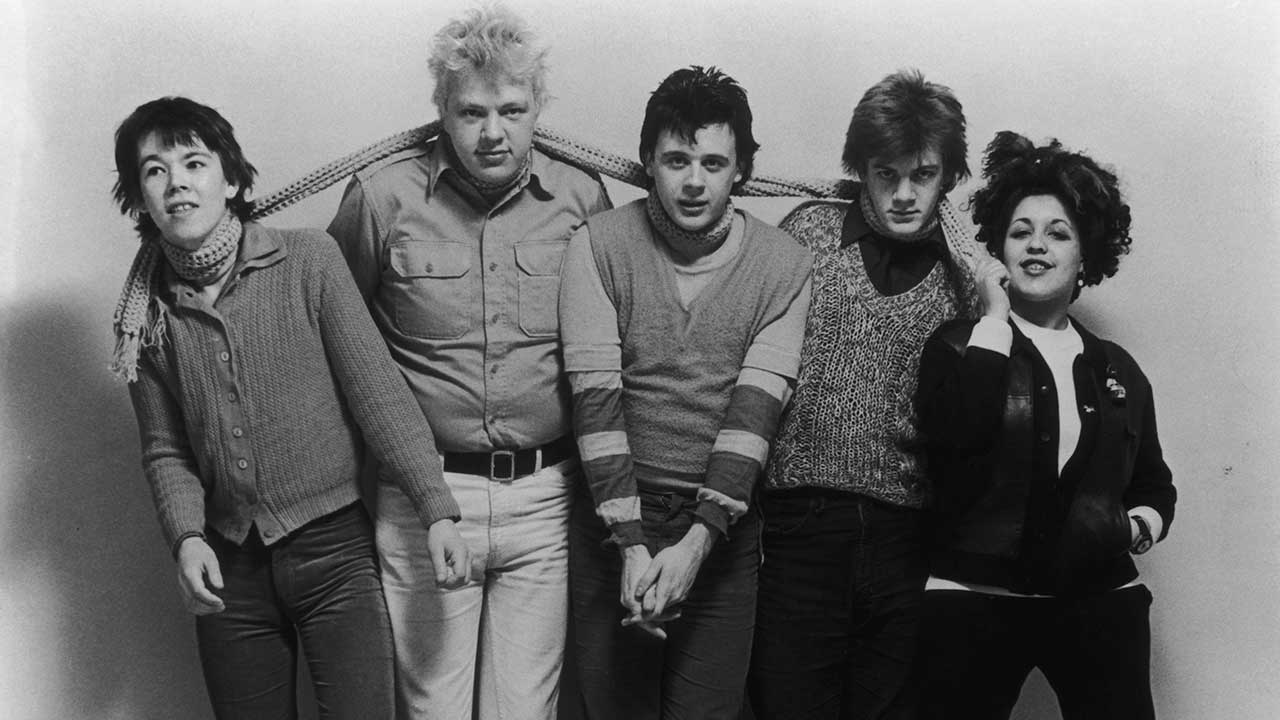Described by unlikely fan and pop producer Mickie Most as “a punk ABBA”, London band X-Ray Spex were led by the singular singer-songwriter Marianne Elliott Said – aka Poly Styrene – who’d seen the Sex Pistols play Hastings Pier on her 18th birthday and was compelled to advertise in the music press for some “Young Punx Who Want To Stick It Together”.
A self-styled disposable, plastic popstar, Styrene soon became a role model with her Pop Art designs, visible chunky dental braces and her “effervescently discordant” vocal, her songs brimming with themes of feminism, anti-consumerism, and the search for her own identity.

X-Ray Spex was originally a clothing stall in Chelsea
In 1976, around the corner from Acme Attractions and SEX, a stall appeared on King’s Road with Poly Styrene at the helm, named after the “mad glasses” that Styrene’s aunt sent to her from the US after her marriage to a GI. Styrene’s home-made stock ranged from cheap rain macs hot-glued with diamante to bath-plug necklaces and plastic dresses, and her clients included Boy George and Paula Yates.
After recruiting her band – Jak Airport (guitars), Paul Dean (bass), Paul Hurding (drums) and Lora Logic (sax) – Styrene gave each a playful makeover and gave the stall’s name to the group.
Two women in the band was not going to work
One reason Spex stood out was because of teenage saxophonist Lora Logic (aka Susan Whitby). Inspired by David Bowie and a “wild jazz man” tutor, Logic’s sound and presence was marketable stuff in the eyes of Spex manager Falcon Stuart.
However, when Jane Suck reviewed Spex in Sounds and went big on Logic’s contribution, Styrene took umbrage. Logic was sacked before she could get her defining parts down on debut album Germfree Adolescents.
Oh Bondage Up Yours! was about more than a pair of trousers
Yes, the catalyst for Spex’s defining anthem was a pair of Seditionaries bondage kecks hanging in the window of Vivienne Westwood’s shop SEX. But Styrene was also talking about “slavery, the silencing of women and suffragettes,” she told Dazed And Confused. “[Westwood’s] clothes had such strong imagery… a million ideas flooded to mind.”
Women were both inspired and intimidated by Styrene
One night, playing at The Roxy, Spex followed The Slits. As Styrene sang into the mic, nothing was heard. Slits vocalist Ari Up had pulled the plug; a petulant young rival safe in her sisterhood.
But Poly was inspiring the next wave, including 15-year-old Neneh Cherry, living in London with her stepfather, jazz trumpeter Don Cherry. “I found my voice and myself listening to Poly Styrene,” singer-songwriter Neneh tweeted in 2017. “There was no other black person in punk, and not a woman.”
Spex’s style wouldn’t always be full-on punk rock
By 1979, Poly wanted to bring some more ambient, reflective, acoustic songs into Spex’s set. This reflected her head-state; she had long battled with what was termed schizophrenia, but would be diagnosed as bipolar disorder in 1991. The band and label weren’t keen, however, and when Spex played a new song to a Paris crowd, the mob grew angry, threw fireworks, and Spex had to escape sharpish.
Later, Styrene embraced the Hare Krishna religion and reconciled with a coincidentally Krishna’dup Logic. Spex reunited for 1995’s Conscious Consumer, which still had political punch, but was softened by songs such as Prayer For Peace.
There’s a Poly Styrene documentary film on the horizon
Poly Styrene: I Am A Cliché, a collaboration between Styrene’s daughter Celeste Bell, biographer Zoë Howe and director Paul Sng has taken a while to reach our screens after being crowdfunded in 2017. It’s a punk’n’roll tale but has Styrene’s relationship with Bell at its core.
“Poly had to deal with issues of race and gender, her own mental health, and her spiritual journey too,” Howe says. “It’s Poly as a punk icon but also as a mother and a human being.” This is planned for 2021.
Read more about Poly in Day-Glo: The Poly Styrene Story, out now via Omnibus Press.

